Table of Contents
Running a small business is hard enough, especially when you’re doing things completely on your own. If you have started an interior design business, or if you’re freelancing as a side gig, then you know the challenges associated with doing excellent work, managing client relationships, invoicing and accounting, marketing and sales, and the countless other daily tasks competing for your time. Being an expert in your field simply isn’t enough to cut it as a business owner.
Whether or not this feels fair isn’t the point; what matters is that you have the resources, knowledge, and advice to keep your head above water and take your business from surviving to thriving. Amidst the businesses of entrepreneurship or your everyday work, it can be easy to forget some of the basic interior design rules or let them slip in the rush to get work done. Only after a project is done will you stop and think, “did I remember the basics of good design? Did I follow the right rules for interior design?”
Think of this article as your cheat sheet for tasks, habits and interior design best practices to follow that will keep you centered and on track without skipping a beat. Our goal is to help you give expert advice to clients and feel confident when approaching any situation by following time-tested advice about how to think about and practice excellent interior design.
Specifically, this article will provide 13 interior design rules (plus 5 bonus tips) sourced from expert interior design resources and cover topics ranging from how to choose furniture to business management. We’ll review some of the top rules of interior design from both residential and commercial design, and provide lots of additional reading recommendations for readers who are feeling extra studious
Read also – What Does An Interior Designer Do?
7 Basic Interior Design Rules for Residential Spaces
These foundational interior design rules apply universally, regardless of style, helping you guide clients and master the basics of interior design.
1. Less is More
Beautiful interior design is not about adding more; it’s about balancing function and form. By attempting to mix styles, contrasting paint colors, types of furniture, clashing lighting fixtures, or any other elements that clearly don’t work together you can easily ruin the functionality and appeal of a home.
This includes using complementary colors without a clear plan. A good interior design rules of thumb is to ask yourself (or the client) does the element that we’re considering contributes to the purpose and decorative needs of the space? If the answer is no, and you’re adding design flourishes just for personal taste, consider cutting them out and paring the scope back.
Good use of negative space is crucial. New features and interesting design aspects can always be added at a later time. It’s especially difficult to scale down components that are more integral to the construction of a specific room..
Read also – Interior Design Basic Concepts, Elements and Principles
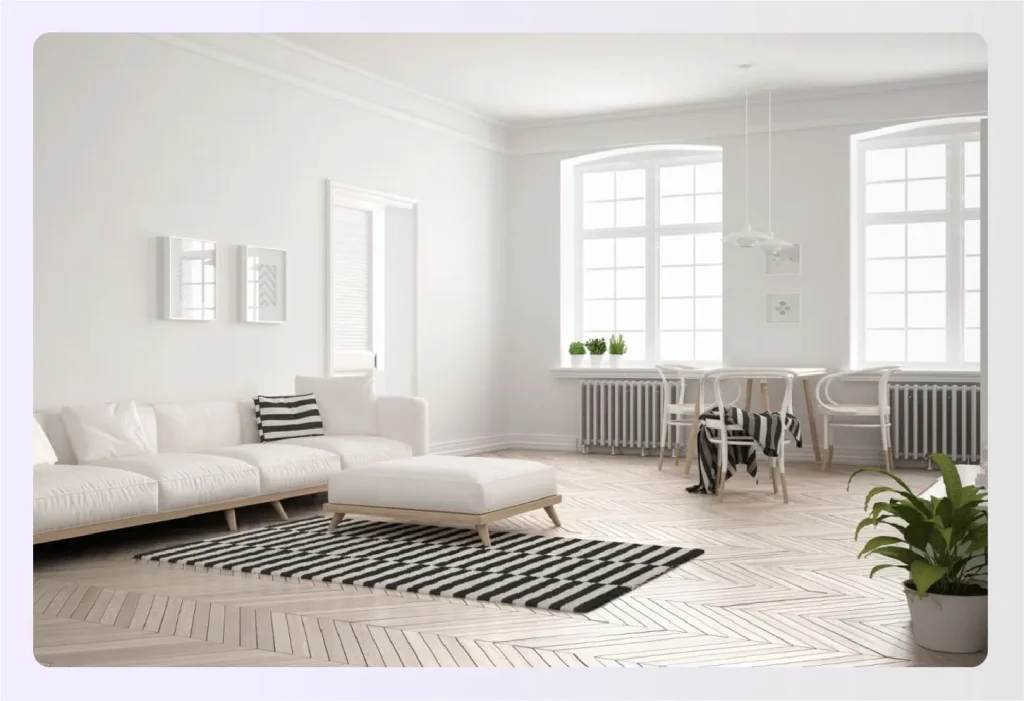
Following the ‘less is more’ interior design rule, Credit: Decoraid
2. Always Create a Focal Point
All expert designers agree that a focal point is crucial for tying a space together and determining what kinds of furniture, lighting, and decor are most appropriate. In some rooms, the focal point might be very naturally determined by structural components like a fireplace, bay window, or kitchen counter.
In other spaces, the focal point can be “artificially” constructed using a particular and intentional arrangement of the furniture. For example, a large couch centered against a wall with evenly space chairs positioned opposite to the couch can make the purpose of the space clear and set the tone for how the space should be used. A central coffee table can also anchor the arrangement.
Read also – Guide To Space Planning in Interior Design
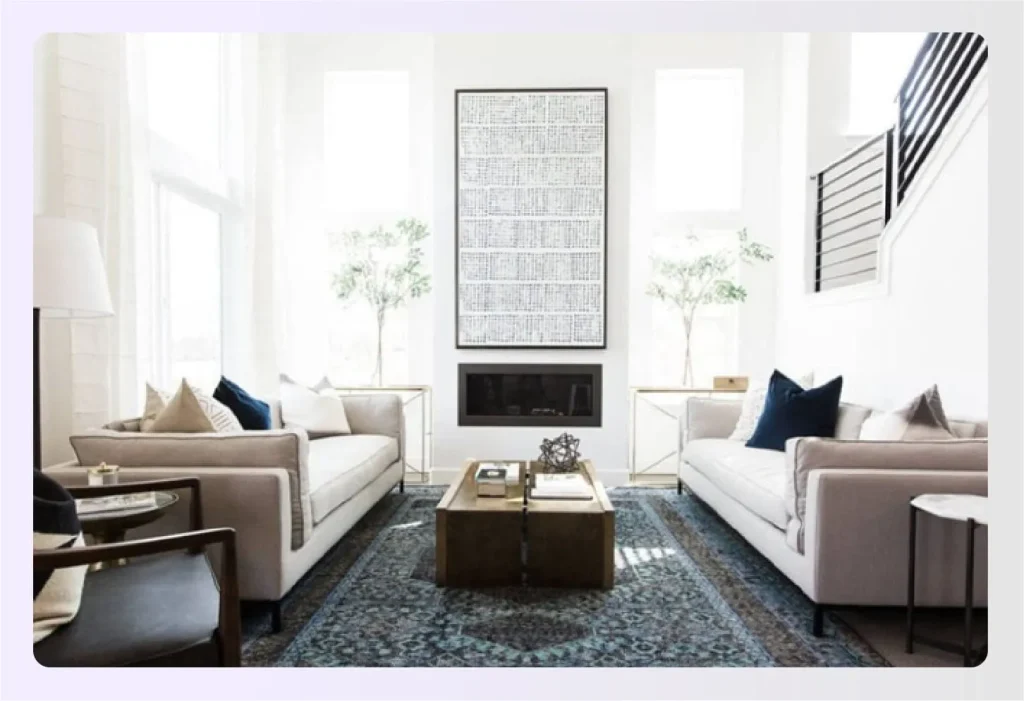
A fireplace acts as a great focal point,Credit: Mymove
3. Cohesiveness is King
Tie each element of the design together, making them somewhat similar and cohesive through intentional choices. These are key interior design guidelines. The cohesiveness should be apparent from the conceptual level all of the ways down to specific design elements (e.g., style to specific choices about colors and furniture). Don’t break the theme for the sake of a personal interest piece.
The best interior designers can make seemingly random decisions feel cohesive and interdependent, even when they appear to be breaking interior design rules or parting with traditional choices. Think about how cohesiveness can be achieved through choices about colors, materials, patterns, textures, and more.
Read also – how to choose materials for interior design
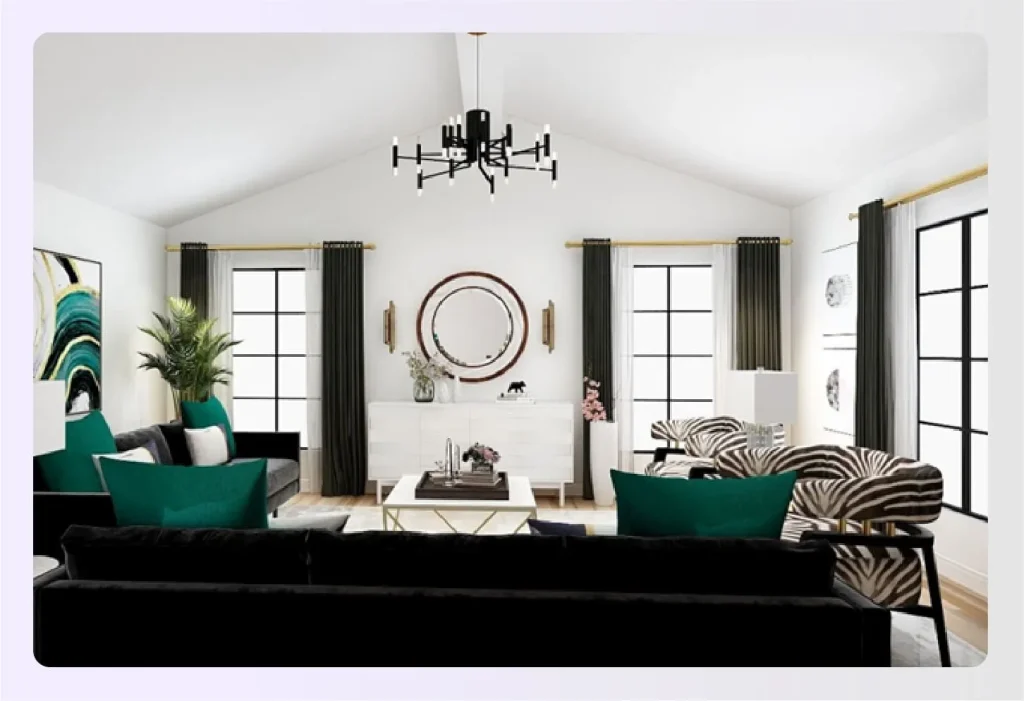
Cohesiveness is one of the most important rules, Credit: Jenny Cohan Interiors
4. Use Multiple Forms of Lighting
Mix lighting to achieve the right effect and moods depending on how the room and space need to be used. Lighting is one of the most overlooked and critical aspects of interior design because amateurs perceive all lighting options to be somewhat similar. However, there are at least 4 different types of interior lighting, and these can make the space more or less welcoming, practical, and safe depending on how they are used.
A kitchen needs task lighting placed over work areas while a living room likely needs softly layered lighting to evenly illuminate the space without making it too bright. This layering adds visual interest. Striking just the right balance will make your space feel comfortable no matter the amount of natural light.
Read also – Best Kitchen Lighting Ideas

Multiple lighting forms in this modern dining room, Credit: Delightfull
5. Design for Human Experience
Create human spaces – places that will be lived in, used, and enjoyed. The overemphasizing function can rob a room of its human appeal. Human needs can be accommodated with ample, comfortable, and naturally placed seating options in addition to engaging and welcoming colors, art, and other decorations.
Remember that people need space to walk around and natural walkways through rooms or around furniture or decorative items will make the space safer and easier to navigate. This is one of the core interior design rules.
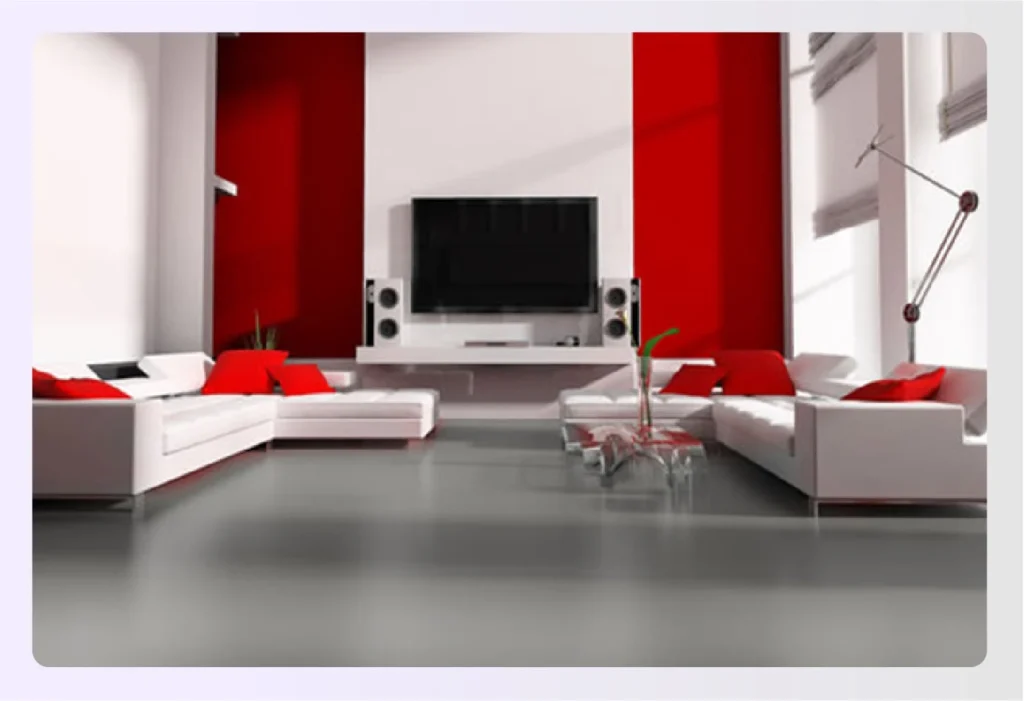
Designing for the human experience is crucial, Credit: J. Design Group
6. Measure Twice, Order Once
Don’t leave important details to chance. Whether you’re measuring a window frame, calculating square footage, or finding the center of a wall, double and triple-check your results to ensure their accuracy before finalizing plans or ordering materials. Easy to make measuring mistakes are one of the most common reasons that projects get delayed or go over budget. This is one of the practical rules for interior design that saves money.
Read also – 20 Common Interior Design Mistakes To Avoid

Accurate measurements are vital interior design rules, Credit: Tallie Jane Design
7. Scale Your Decor to Fit the Space
Ensure that the furniture, window dressings, rugs, etc. all fit the actual space that you’re designing. While they might all fit on paper, it might not feel natural once each piece of furniture is actually installed or moved into place. Understanding and accounting for scale is incredibly important both from an aesthetic perspective to meet functional requirements.
A small room can’t accommodate a huge couch and still work well for hosting a gathering. The visual weight of large items can make the room feel smaller. In addition to space constraints, other decorative components should be properly sized to the room. Some of the most important interior design rules to remember regarding where to place items in a specific room include the following:
- Artwork should be hung at eye level (not too low or high)
- Curtains should be installed above the top of the window frame and set to barely touch the floor
- Rugs should extend a little beyond where the furniture sits.
Reada also – 10 Best Small House Design Ideas
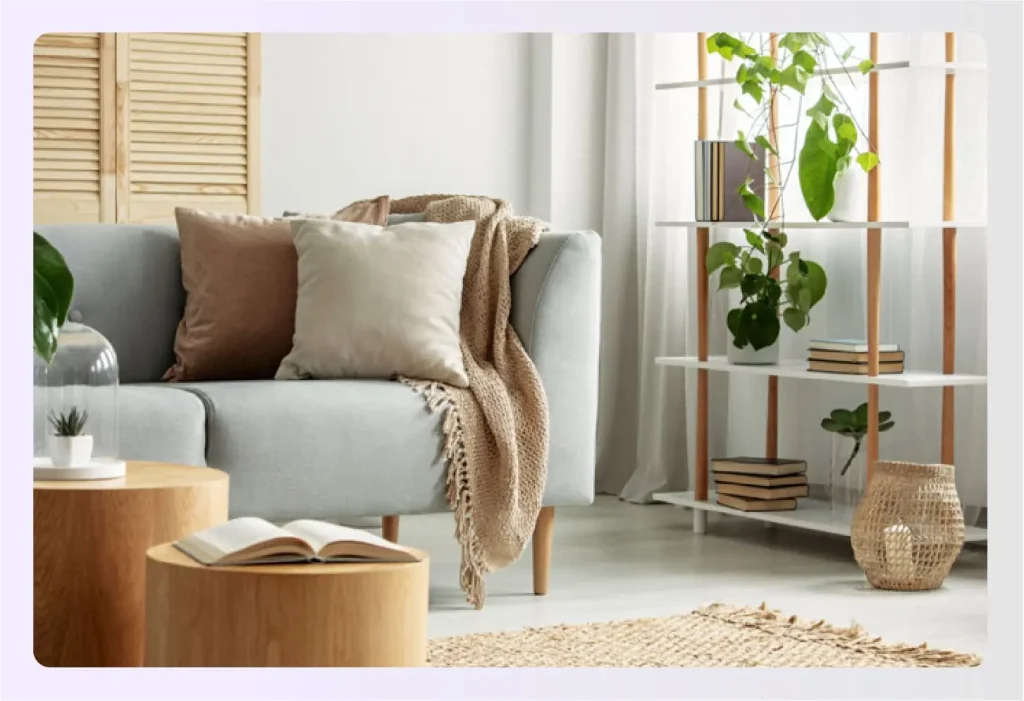
Scaling decor to fit the space correctly, Credit: The Spruce
6 Basic Interior Design Rules for Commercial Buildings
Commercial design follows specific interior design rules focused on regulations, flexibility, and branding, differing significantly from residential projects.
1. Know Industry Regulations
You need to know best practices AND specific regulations that are relevant to the industry for which you are designing. This is important at each phase of the project, from initially consulting with the client to completing the design. Requirements vary widely depending on the commercial purpose of the building (e.g., food preparation, entertainment, etc.) and will affect how the space comes together.
Read also – Rules for Successful Commercial Interiors
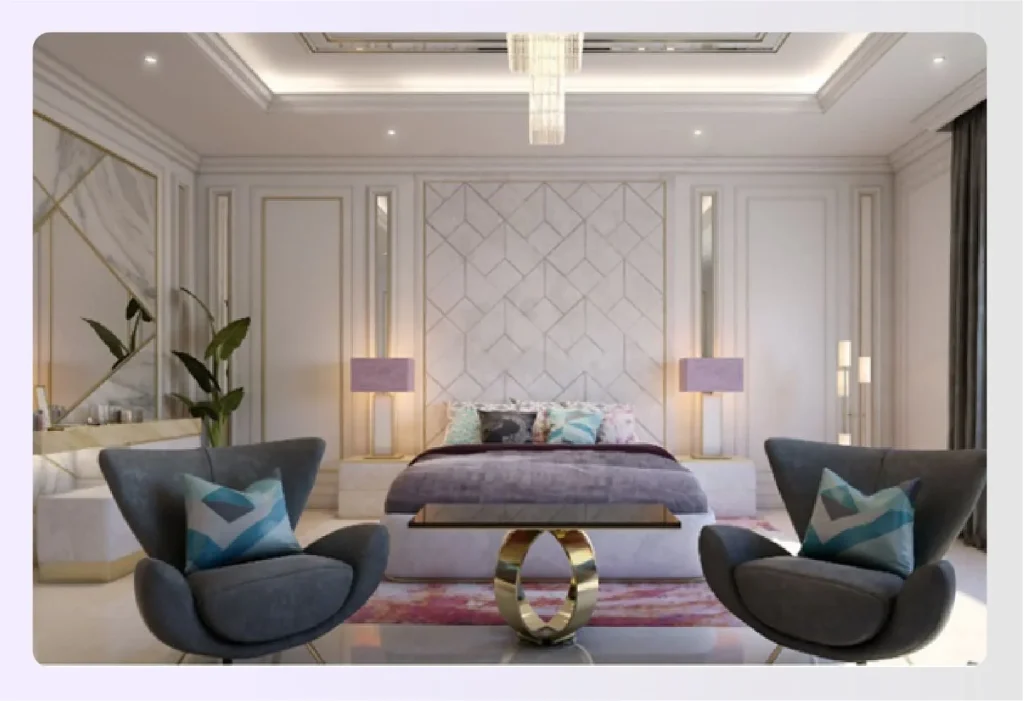
Commercial interior design rules include industry regulations, Credit: Medium
2. Design for Flexibility
Make sure that the space can be updated or reconfigured without too much hassle. This is particularly important if the space will have multiple purposes. You can achieve maximum flexibility in commercial design by reducing the number of immovable fixtures, allowing for the easy addition of furniture or changing of paint color. Choosing or recommending furniture that is modular can also increase the versatility of space.
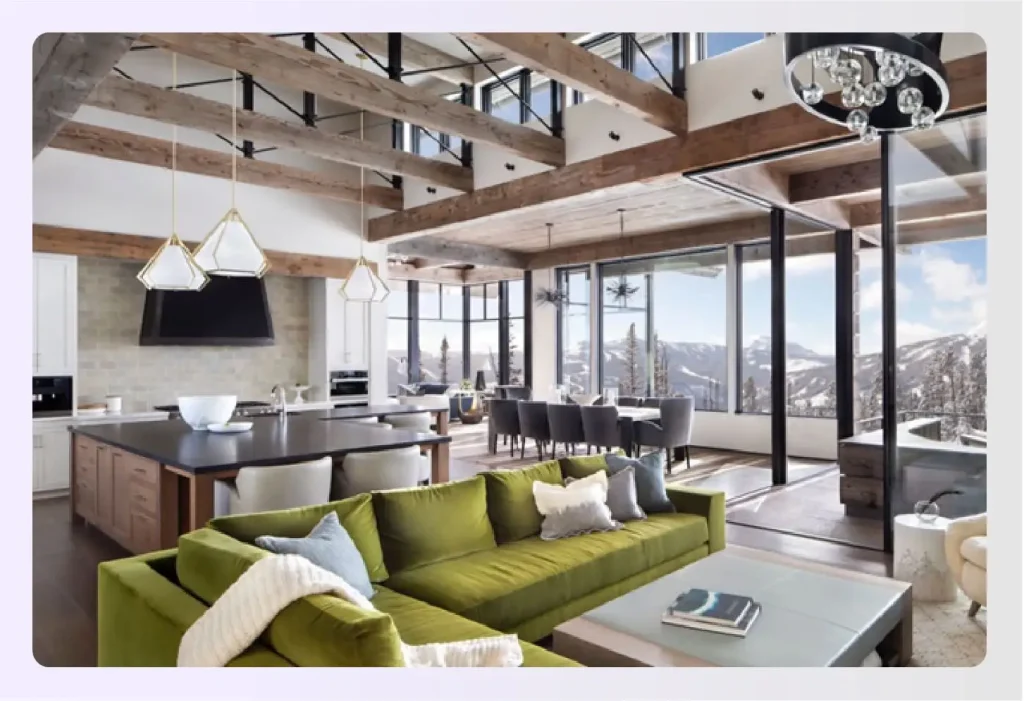
Flexible design in a large, open commercial space, Credit: Mansion Global
3. Create Space
Open spaces will help with traffic movement, which can be controlled and guided based on the layout of a room. This can create symmetrical balance or asymmetrical balance depending on the goal. While there are regulations about entrances and exits, other parts of the building’s design will be up to you to solve.

Creating open space is a key design rule, Credit: Interior Design Ideas
4. Incorporate Branding Where Needed
The interior and exterior of a commercial building typically have at least some branding elements included reflecting the personality of the business. Make sure that you know how to incorporate branding features of the business if needed (like colors, signage, logos, etc.). Understanding the brand will likely affect your high-level stylistic choices.
Read also – How To Build Strong Interior Design Brand?

ncorporating brand colors and themes into design, Credit: Mindful Design Consulting
5. Take Small Project Steps
Moving smartly does not mean moving slow. Tackle commercial projects in phases, ensuring that stakeholders are consulted at every step. Many clients will either require or prefer that you use effective interior design project management processes and templates to ensure that the proper checks are applied before proceeding to the next phase.

Following project management rules for interior design, Credit: MultiBriefs
6. Don’t Forget the Human Factor
While this might sound obvious, we’re ending this section on commercial interior design tips with a simple reminder that even corporate spaces will be used by humans. This means that you should deeply consider how to add things like accessible seating, power outlets, public restrooms, coat racks, etc.
Commercial spaces can still be inviting and hospitable without being homey or allowing people to loiter for hours. For example, hotels often have places for guests to sit while waiting to check in or together with others before heading out to explore. The seating might be somewhat industrial (spill-resistant fabrics), but it offers the guests a needed place to rest when not in their room.
Read also – 5 Ways that Interior Design Influences Your Mood
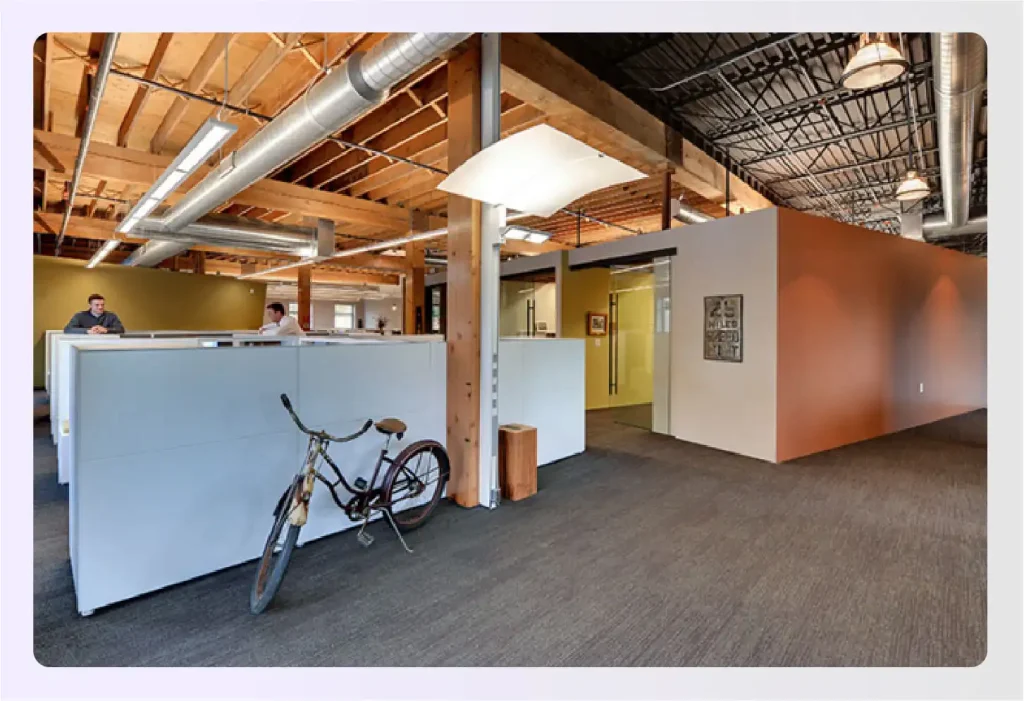
Commercial design must always consider the human factor, Credit: Planforce Group
5 Bonus Rules for Running a Successful Interior Design Business
Knowing the interior design rules is half the battle; these tips help you build a profitable, sustainable interior design business.
1. Always Be Networking
New business can take months (or longer) to develop. This is due to many reasons: the client might not be ready, they might be in the middle of their decision-making process, they might have been unexpectedly delayed, etc. Aim to consistently have new prospect conversations, even if they don’t immediately result in a proposal. This will help you build a list of people to qualify and communicate with overtime, staying top of mind.
2. Develop Referral Relationships
If your goal is to “catch opportunities,” don’t you want to have lots of lines in the water at once? What if you can catch new business without even trying? Solid, mutually beneficial referral relationships can help you consistently get introductions to new clients.
3. Practice Disciplined Financial Management
Your business relies on good financial management, from new business forecasting and goals to proper expense tracking and reporting. In fact, we think that this topic is so important for interior designers to understand that we wrote an entirely separate article on it called Sales Tax and Accounting Basics for Interior Design.
4. Use Foyr Neo to Wow Clients and Work Faster
Legacy interior design software is slow, cumbersome, and unimpressive to clients that expect the best from their design consultant. Plus, old software is unintuitive for users and expensive, requiring you to spend valuable time and money learning an outdated platform.
Foyr Neo is a powerful, all-in-one interior design software built with interior designers in mind. Quickly create 12K renders to show clients their long-awaited design concepts, and pick from thousands of templates and preloaded models of common items like furniture, lighting, and other decors. Set the mood with precise controls for interior and exterior ambiance. Do all of this from your laptop with our browser-based software that easily stores your work.
5. Join the Foyr Community
Remember when we said to always be growing your network? What better way to get connected than by joining a community for interior designers at community.foyr.com? Members will receive tons of opportunities to learn about interior design from proven experts, find other freelance interior designers, find jobs posted specifically for freelance designers, and participate on a social networking platform exclusively for interior designers. What are you waiting for? Get inspired and get connected today!
Conclusion
Knowing the interior design rules is one thing; applying them is another. Foyr Neo empowers you to execute every rule flawlessly, from space planning and scaling furniture to visualizing lighting and color palettes, all within one intuitive platform.
- Drag and drop from 60,000+ pre-modeled 3D assets to perfectly scale your room.
- Use our AI-Assisted features to handle the tedious rules of interior design.
- Create stunning 12K renders in minutes to get client approval faster.
- Test different color palettes and lighting options with just a few clicks.
- Work entirely online, from 2D floor plan to 3D render, with nothing to install.
Stop letting technical software slow you down. Start designing smarter and faster, applying all these rules with a professional interior design software.
Book a 14-day free trial of Foyr Neo and streamline your designing processes effortlessly.
FAQs
What is the 3-5-7 rule in interior design?
The 3-5-7 rule is a guideline for arranging decor. It suggests grouping items in odd numbers, like 3, 5, or 7, which is more visually appealing and dynamic than even-numbered groups. This applies to items on a shelf, a coffee table, or a mantelpiece. This asymmetry creates visual interest and makes the arrangement feel more natural and less staged.
What is the 60 30 10 rule in interior design?
This is one of the most common interior design rules for color. It dictates that 60% of your room (e.g., walls) should be a dominant color, 30% (e.g., furniture, rugs) should be a secondary color, and 10% (e.g., throw pillows, art) should be an accent color. This ratio creates a balanced and harmonious color scheme that is easy on the eyes.
What is the golden rule in interior design?
The “golden rule” often refers to the golden ratio (approximately 1:1.618), a principle found in nature and art. In design, it helps create aesthetically pleasing proportions. This can be applied to the size of a rug versus the room, the placement of art on a wall, or the scale of a light fixture over a dining room table, ensuring harmonious principles of interior design.
What are the seven principles of interior design?
The seven core principles of interior design are Balance (symmetrical, asymmetrical, or radial balance), Harmony (all elements working together), Rhythm (repetition of visual patterns), Proportion & Scale (the relationship between objects), Emphasis (the focal point), Contrast (using space, color, or form to create interest), and Detail (the small touches that complete the space).










